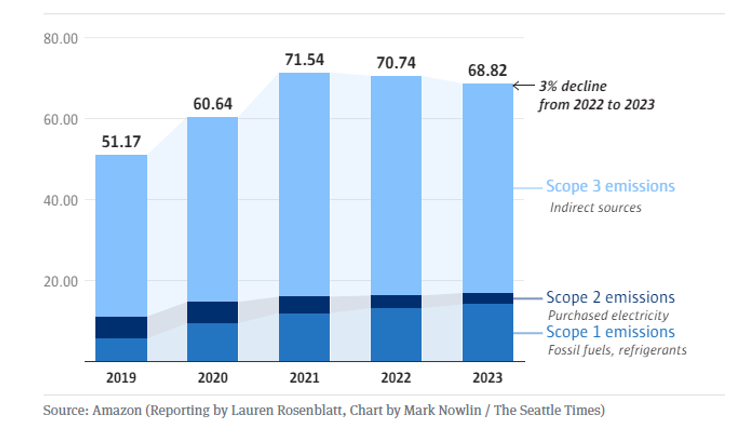
Introduction: The Urgency of Climate Action
The world is approaching a critical threshold in the fight against climate change, a fight that is mainly against ourselves. At the Paris Climate Accord, participating nations committed to limiting global temperature rise to 1.5°C above preindustrial levels, recognizing that surpassing this threshold would lead to severe and potentially irreversible environmental changes. These changes include more frequent and intense heatwaves, droughts, and floods, ravishing the earth’s surface. Particularly in Africa, Asia, Central and South America, small island nations, and the Arctic, vulnerable populations are at the most significant risk.
So that leaves us with the question, where are we in our battle against this 1.5°C threshold? In 2016, when the Paris Climate Agreement was signed, the global temperature was 0.94°C above preindustrial levels[1]. We are now in 2024, and it’s on track to be the hottest year ever recorded, with global average temperatures rising above 1.5°C for 12 consecutive months[2]. This year, the U.S. experienced 19 confirmed weather and climate disaster events, each causing over $1 billion in losses. These included 15 severe storms, a tropical cyclone, a wildfire, and two winter storms, resulting in 149 fatalities and substantial economic damage. For context, the annual average from 1980 to 2023 was 8.5 events, but in the last five years (2019–2023), that average has jumped to 20.4[3]. This shows that we are now entering a period where it is becoming less and less likely that you will not be impacted by climate change. Every year, more and more people will find themselves casualties of a natural disaster, which is only getting more common. Additionally, more businesses will be forced to close, and countless people will have to leave the places they've called home their entire lives. Without immediate and ambitious efforts to reduce greenhouse gas emissions, the consequences will be dire, making adaptation increasingly complex and costly.
So, where do we start? For starters, Business reform is essential, as it has been found that only roughly one hundred companies are responsible for more than 70% of global greenhouse gas emissions, with most being global energy corporations. Other industries, like delivery, tech, data, and mining, largely contribute to the usage of energy from fossil fuels, leading to global warming. For this article, we will be looking at Amazon, a company that spans multiple market sectors. We will examine Amazon’s C02 emissions, data centers, and the company’s effort to brand itself as climate friendly.
How does a Big Tech Company like Amazon affect the environment
CO2 Emissions
Digital technology is now deeply woven into nearly every facet of our lives— from smartwatches to vehicle sensors and streetlights. This widespread integration comes with a significant environmental cost, as digital tech accounts for 3.5% of all greenhouse gas emissions. Moreover, energy consumption in this sector is increasing by about 6% each year, exacerbating the issue. Emissions from digital technology are categorized into two types: direct and indirect. Direct emissions result from manufacturing, logistics, procurement, and maintaining office environments. These are emissions directly linked to factories, vehicles, or even the heating and cooling of buildings. On the other hand, indirect emissions stem from end-use power consumption, carrying an implied emission cost. Even something as simple as scrolling through Twitter has a measurable carbon footprint. This includes the energy used to charge devices, the power needed by cell towers or Wi-Fi routers, and the increased demand on servers like Twitter. The tech giants responsible for the most significant emissions contribute significantly to both categories. We must shift towards greener energy on a broad scale to achieve accurate, lasting improvements.
Data Centers
Data centers, the backbone of modern digital infrastructure, are where the computer hardware that powers e-commerce, video streaming, and artificial intelligence resides. Amazon, a key player in this space, is currently developing data centers valued at $87 billion. According to Business Insider, these massive, unassuming structures—often tucked away along highways or suburban neighborhoods—are easy to overlook. Yet, their environmental impact is anything but insignificant. Data centers consume such enormous amounts of power that they strain entire energy grids, exacerbating the climate crisis. In Northern Virginia alone, Amazon operates or is planning 102 data centers, which require more energy than the entire city of Seattle. The urgency to meet these energy demands leads energy companies to abandon clean energy solutions like wind and solar. The infrastructure for these renewable sources simply cannot be scaled quickly enough. Consequently, Dominion Energy has proposed canceling the retirement of older, polluting energy infrastructure and constructing new gas-burning plants to keep up with the demand.
Amazon’s Challenge with Climate Change:
Five years after Amazon set an ambitious climate goal, the company claims to be making strides in reducing emissions—though critics argue that these claims may be misleading. In its latest sustainability report, Amazon announced a 3% reduction in carbon emissions last year, attributing this progress to its substantial investment in renewable energy. This marks the most significant decrease the company has seen since launching its Climate Pledge in 2019, which aims for net-zero carbon emissions by 2040. However, despite this progress, Amazon's total carbon emissions are still nearly 20 million metric tons higher than when it first embarked on this journey five years ago.
Amazon has achieved one milestone seven years ahead of schedule, claiming in 2023 that it matched all of its global electricity consumption—across data centers, corporate buildings, grocery stores, and fulfillment centers—with 100% renewable energy. However, this seemingly positive news is met with skepticism. Amazon Employees for Climate Justice, an independent group advocating for more aggressive environmental action, released a report on the same day that disputes Amazon’s claims. They argue that Amazon's sustainability calculations are misleading. The report points out that Amazon does not account for emissions from third-party merchants, representing over half of its platform's sales. Additionally, the report criticizes Amazon for relying on renewable energy purchases that do not necessarily reduce its dependence on fossil fuels.
Amazon faces criticism for significantly underreporting its carbon footprint compared to competitors like Target and Walmart. While these retailers provide a comprehensive view of their emissions, Amazon only reports emissions from its brand products—making up just 1% of its sales—and from items sold directly under the "ships from and sold by Amazon.com" label, excluding most third-party sales. This selective reporting results in a much lower reported carbon footprint, despite Amazon's higher sales volume. Although the company has faced pressure from investors and activists to disclose its total emissions, it recently released a report that it requested to keep private. This approach starkly contrasts with its public image as a climate leader, underscored by its "Climate Pledge" to achieve zero emissions by 2040. By failing to account for all emissions linked to its operations and products, Amazon is criticized for shirking its full responsibility for reducing environmental impact, prompting calls for more rigorous regulatory oversight.
Amazon has been associated with several solar energy projects in Spain, but the company does not own these solar plants, contrary to its claims. Instead, Amazon merely purchases the energy they produce. These plants' real owners and developers are other companies, such as Britain’s Solarcentury. Despite Amazon’s claims of involvement in these renewable energy projects, its role is limited to energy procurement rather than the development or management of solar plants. This discrepancy has led to accusations of greenwashing, as Amazon appears more environmentally friendly than it is. This criticism is amplified by Amazon's increased overall carbon emissions. Additionally, these solar projects are often divided into smaller segments to evade stricter government regulations that apply to larger projects. This segmentation can obscure the true environmental impact of the projects, as they are not assessed as a whole. Furthermore, these solar projects are frequently sold to other companies shortly after becoming operational, a move that some critics view as a strategy for quick profit rather than a genuine commitment to sustainable energy.
Changes in Internal and External Policy
Tier 1: What can Amazon do?
- Double down on what has already begun
Amazon has reported a slight reduction in its carbon footprint over the past two years. Still, this decrease is minimal compared to the nearly 40% surge in emissions since the company's initial climate pledge. While Amazon has made some progress—such as adopting electric forklifts and using solar power in its data centers in Arizona and California—these steps fall short of what is needed. To make a meaningful impact, Amazon must significantly scale up these green initiatives, especially at its Northern Virginia data centers, which consume more power than the entire city of Seattle. Expanding these efforts is crucial for aligning the company's growth with its climate goals.
2. Bound themselves to more realistic timelines
Amazon's Climate Pledge, which aims for carbon neutrality a decade ahead of the 2050 timeline recommended by scientists, showcases its ambitious environmental goals. However, the company has faced accusations of greenwashing. Critics argue that Amazon may have exaggerated its investments in solar power and downplayed its carbon footprint, presenting a greener image without making significant changes. While the company remains focused on growth, its 2023 financial filing acknowledges that climate change could affect sales and operating results. This admission highlights a potential conflict between its sustainability ambitions and growth objectives. The situation underscores companies' difficulties in balancing rapid expansion with ambitious climate targets, raising concerns about data accuracy and transparency.
3. EVs are not the answer
The production of electric vehicle (EV) batteries carries a significant carbon footprint, meaning that simply switching all delivery vehicles to electric models won't solve Amazon's environmental issues. The high carbon emissions from the frequent and inefficient transportation required by one-day delivery and the added packaging waste and resource consumption highlight the need for more strategic measures. One practical approach could be revising policies around one-day delivery. For instance, increasing the cost of one-day delivery could discourage non-essential orders and enable Amazon to consolidate shipments more effectively, reducing the number of trips and associated emissions. This change would lower carbon emissions, ease urban congestion, and minimize the environmental impact of their delivery network. Amazon could balance customer convenience with a commitment to more sustainable practices by offering one-day delivery as a premium service.
Tier 2: What are policy changes that can assist?
Addressing climate change requires a flurry of targeted policies that enforce accountability for environmental impacts. In this next section, we will be discussing current proposals to hold businesses to higher standards for their environmental impact:
Tackling climate change demands a multi-pronged strategy involving bold policy initiatives, stringent regulations, and innovative research. The Green New Deal represents a transformative framework, aiming for a shift to 100% renewable energy, creating 20 million jobs, and ensuring a fair transition for all communities, especially those marginalized. It also calls for substantial investments in infrastructure, public transportation, and global climate commitments, such as rejoining the Paris Agreement and supporting the Green Climate Fund. International standards like the EU’s General Product Safety Directive (GPSD) and REACH enforce transparency about environmental impacts, promote safer materials, and incentivize recycling and waste reduction. Holding businesses accountable and encouraging sustainable practices through these measures will help mitigate toxic emissions and environmental damage. Additionally, prioritizing building decarbonization, increasing funding for research and development, and establishing robust accountability mechanisms are essential steps. Setting clear targets for reducing carbon emissions in the building sector, boosting grants for environmental research, and implementing comprehensive monitoring and reporting systems will drive innovation and ensure compliance with environmental standards. Strengthening international agreements and fostering global collaboration will further enhance business accountability and collective action against climate change.
Conclusion: Shifting from Business Profit to Planet Health
As we confront the escalating climate crisis, it is imperative to realign our priorities from maximizing business profits to safeguarding the health of our planet. The urgent reality of surpassing the 1.5°C threshold highlights the need for immediate and profound changes across all sectors. While Amazon's ambitious Climate Pledge and investments in renewable energy are commendable, the company's actual environmental impact reflects a broader issue of transparency and commitment.
Amazon's challenges, from underreporting carbon emissions to accusations of greenwashing, underscore the broader dilemma many corporations face. The promise of sustainability often clashes with the practicalities of rapid business growth and profit-driven motives. Companies must move beyond surface-level measures to address these issues effectively and embrace comprehensive, transparent actions that genuinely contribute to environmental preservation. The proposed policy changes, such as those embodied in the Green New Deal and international regulatory frameworks, offer a blueprint for more rigorous environmental accountability. By enforcing stricter regulations, incentivizing green practices, and fostering global collaboration, we can create a robust system that ensures businesses contribute positively to the climate.
Innovative solutions, like revising delivery policies and expanding green initiatives, are crucial for reconciling business operations with environmental sustainability. The transition to a more climate-conscious business model will mitigate the adverse effects of global warming and promote a more equitable and resilient society. Ultimately, shifting the conversation from business profit to planetary health requires a collective effort from policymakers, businesses, and individuals. By holding companies accountable and championing genuine environmental stewardship, we can steer towards a future where economic activities align with the urgent need to protect our planet and its ecosystems.
https://www.dentallace.com/blogs/news/45-stats-about-big-tech-s-carbon-footprint-by-tom-read
https://www.thecooldown.com/green-business/amazon-data-centers-pollution-energy-use/
[1]https://www.ncei.noaa.gov/access/monitoring/monthly-report/global/201613#:~:text=The%20average%20global%20temperature%20across,C%20(0.07%C2%B0F).
[2]https://www.euronews.com/green/2024/02/08/2024-begins-with-worlds-hottest-january-on-record-eu-scientists-confirm
[3]https://www.ncei.noaa.gov/access/billions/#:~:text=2024%20in%20Progress%E2%80%A6,events%20(CPI%2Dadjusted).


